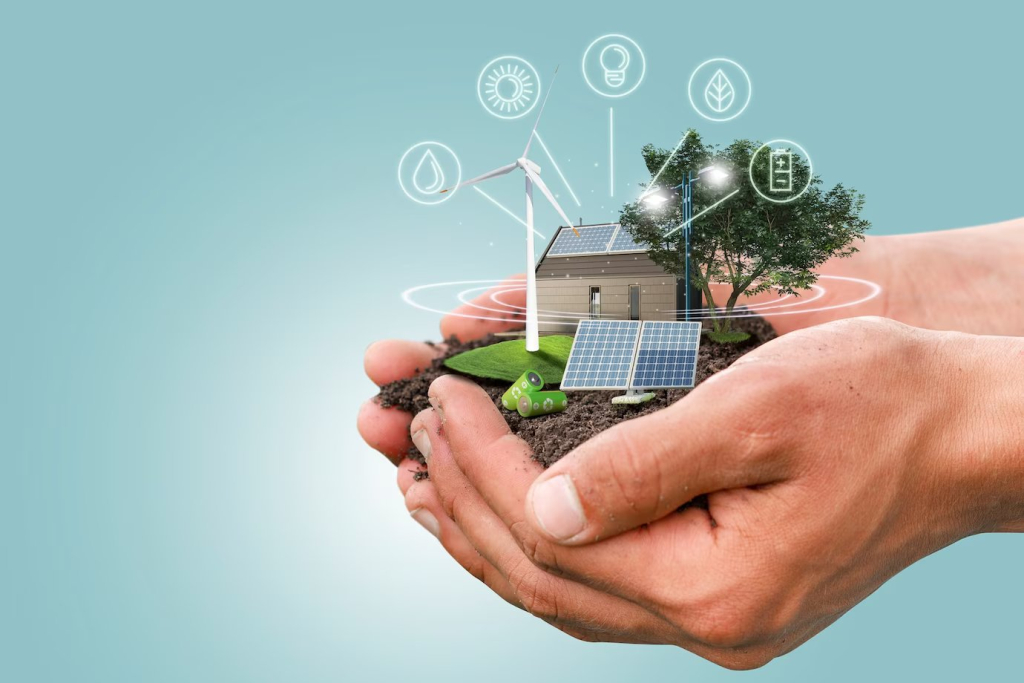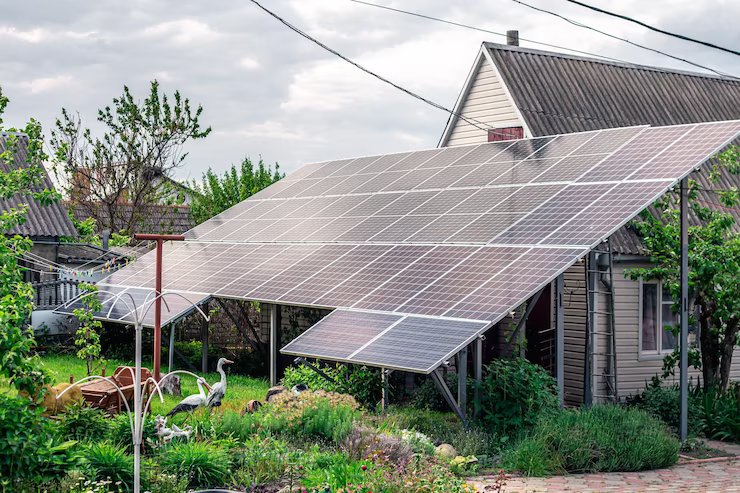Community Solar Project in Housing Developments
Introduction to Community Solar
In an era where renewable energy is not just a choice but a necessity, community solar projects have emerged as a beacon of hope.
These initiatives allow individuals and businesses to partake in solar energy generation without installing solar panels on their property.

What are Community Solar Projects?
Community solar projects, also known as community solar programs or shared solar projects, are innovative initiatives designed to make solar energy accessible to a broader audience.
It is a type of renewable energy system in which several participants, sometimes known as “community solar subscribers,” enjoy the advantages of a single solar array or solar farm.
Community solar projects allow multiple individuals or organizations within a community to invest collectively and benefit from a single solar energy system.
The communities set up their own solar panels for the consumption of subscribers within their communities.
This method to solar energy is gaining hold throughout the world, allowing people, organizations, and communities to reap the benefits of solar electricity without having to put solar panels on their own rooftops.
Instead of installing solar panels on your roof, you can subscribe to a community solar program and receive a share of the electricity generated from a larger, local solar farm or in the came of communities, solar gardens or array.
How Does Community Solar Project Work?
A community solar work starts by pooling resources from multiple community members to finance, develop, and maintain a solar energy system. Here’s how it typically works:
Development
Community solar developers identify a suitable location for a community solar farm with the help of the community solar stakeholders. Most community solar projects can be set up in a large open field, unused land, or even a brownfield site.
Solar Installations
Once the location has been identified, solar installation begins, for energy generation. Typically ground-mounted solar arrays are done on the chosen site, but rooftop solar panels on community buildings or other structures may also be used.
Community Solar Subscription
Community members, known as community solar subscribers, can purchase a share or subscribe to the community solar project online, often with little to no upfront costs.
Electricity Generation
The solar farm generates electricity distributed to the community solar subscribers through the local power grid.
Virtual Net Metering
Credits for the electricity generated by the community solar project are applied to the subscribers’ electricity bills, reducing their utility bills.
The Mechanics of Community Solar Projects
How Community Solar Works

Gone are the days when residents are not able to afford solar power and have to go through the cumbersome process of installing solar panels in one’s own roof to enjoy solar savings. Community solar offers solutions to this restriction.
Community solar projects are straightforward. A solar developer often installs a large solar array in a local solar farm.
Interested participants can subscribe to the solar project and receive credits on their electricity bills for the power produced by their share of the solar garden.
Subscription Models
There are typically two main models for community solar subscriptions: ownership and lease. In the ownership model, participants own a portion of the solar panels. In the lease model, they lease a part of the solar array for a set period.
Benefits of Community Solar
Lower Electricity Costs
Community solar projects offer a practical solution for individuals and organizations looking to reduce their electricity bills. Community solar supports the need for power generation without heavily investing on the acquisition of the solar panels.
By subscribing to a community solar program, you can enjoy the benefits of a community solar subscriber like clean solar power, without investing in solar panels.
This is particularly advantageous for those needing more means or the ideal rooftop for installing solar panels.
Environmental Benefits
We are switching to solar energy through community solar means, reducing our dependence on fossil fuels and decreasing greenhouse gas emissions.
Solar power production produces clean and sustainable energy, contributing to a cleaner environment and a greener future. Also, you save money in the long run.
Supporting Local Renewable Energy
Community solar projects stimulate the growth of renewable energy systems in local communities. Participating in these initiatives directly supports the development of clean energy infrastructure in your area, reducing the need for big power plants for energy production that rely on fossil fuels.
No Need to Install Solar Panels on Your Roof
Only some have the right roof or the upfront capital required to install solar panels. Community solar programs eliminate this hurdle, allowing anyone to access the benefits of solar energy without needing a roof.
Financial Incentives and Tax Credits
Many community solar programs offer participants financial incentives and tax credits, reducing the overall cost of subscribing to a community solar project. These incentives vary by location but can make solar energy even more affordable.
Community Solar in Practice
A shining example of a community solar project is PAVI Green. They focus on providing affordable and efficient solar solutions in residential and commercial spaces.
The company emphasizes the importance of accessibility in community solar. It offers various programs to make solar energy available to a broader audience, ensuring that the benefits of solar are not limited to those who can afford to install rooftop solar panels.
Solar Energy Technologies Office (SETO)
The Solar Energy Technologies Office has been instrumental in advancing solar technologies. Their work includes funding projects that increase the accessibility and efficiency of solar power, including community new solar farm and solar system.
Navigating the World of Community Solar
Choosing a Community Solar Provider
When selecting a community solar provider, it is essential to consider factors like the upfront costs, the subscription terms, and the solar developer’s reputation. PAVI Green, for example, offers transparent and customer-friendly options.
Understanding Solar Access and Incentives
Factors like location and local regulations can limit solar access. However, many areas offer incentives like tax credits to encourage participation in community solar programs.
Virtual Net Metering
Unlike a regular utility company, one key incentive is virtual net metering, which allows subscribers to receive credits on their electric bill for the electricity produced by their portion of a community solar array.
The Future of Community Solar
Expansion and Innovation
The future looks bright for energy produced from a community solar system. With technological advancements and increasing public and private support, community solar is poised to become a significant player in renewable energy.
Community Solar and Energy Efficiency
As the growth in community solar share increases, its integration with energy efficiency measures becomes more crucial. Efficient use of energy complements the benefits provided by community solar, leading to a more sustainable future.
Community solar is not just a trend; it’s a sustainable solution for the future. By participating in community solar programs, individuals and businesses can contribute to a greener world, enjoy financial savings, and support renewable energy development.
Whether through local initiatives like Pavigreen’s projects or larger-scale community solar farms, the power of the community in harnessing solar energy is undeniable.


